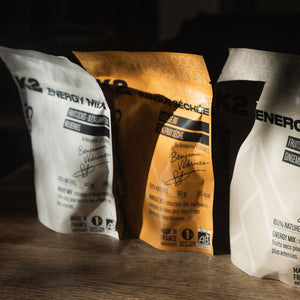Why are proteins essential for athletes?
Proteins play a central role in an athlete's nutrition. Essential for muscle building, recovery, and tissue repair, they also play a role in numerous metabolic functions: immunity, hormones, enzymes, and more.
But their consumption must be considered carefully. Unlike carbohydrates or lipids, proteins are not stored in the body. Excess intake can then lead to side effects, including kidney overload and acidification of the metabolic environment.
Definition and role of proteins
Proteins are chains of amino acids (AA), made up of carbon, hydrogen, oxygen, and nitrogen. The human body requires 20 different AAs, 8 of which are considered essential because they cannot be synthesized by the body: isoleucine, leucine, lysine, methionine, phenylalanine, threonine, tryptophan, and valine.
These amino acids are present in both animal and plant foods, but with significant differences in composition.
The biological value of proteins
The biological value of a protein refers to its ability to provide all the essential amino acids . Animal proteins, such as egg ovalbumin (reference protein), white meat, fish, or dairy products, have a high biological value.
Plant proteins, on the other hand, are often incomplete, with the exception of soy. But by combining different plant sources, such as:
-
cereals + legumes (rice/lentils, corn/beans, wheat/chickpeas), we can replenish all the essential amino acids in one day, even without consuming them at the same meal.
Protein needs of athletes
Protein needs vary depending on the intensity of physical activity. A reasonable estimate for an athlete is approximately 2g of protein per kilogram of body weight per day.
But be careful : consuming more isn't necessarily better. Excess consumption doesn't promote performance, and can actually lead to an overload of nitrogenous waste, which is eliminated by the kidneys, increasing their demands.
Acidic charge of proteins: the invisible trap
What is the PRAL index?
PRAL (Potential Renal Acid Load) measures the acidifying or alkalizing effect of a food on the body. The higher the index, the more acidifying the food. Here are some examples:
| Rib of beef | 11.16 |
| Ham | 12.22 |
| Egg | ~7 |
| Quinoa | -0.19 |
| Lentils | 2.15 |
| Brown rice | 1.05 |
| Vegetables (in general) | < 0 |
Foods of plant origin (fruits, vegetables, legumes) are generally alkalizing, while those of animal origin are often acidifying.
Too much meat is bad for recovery
Intense physical activity naturally produces acidic waste. If diet adds to this acid load, it can unbalance the body's homeostasis and promote inflammation. Hence the importance of diversifying protein sources and limiting red and processed meats.
Animal proteins vs. plant proteins: towards a balance
The belief that "eating meat = building muscle" is based more on collective imagination than biological reality. What matters is the quality and variety of amino acid intake.
Practical advice:
-
Alternate between animal proteins (eggs, fish, white meats) and vegetable proteins (whole grains, legumes, soy).
-
Include plant sources in every meal.
-
Reduce foods with high acidity.
-
Favor an individualized approach according to your needs.
In summary: optimizing your protein intake for performance
-
✅ Protein is vital for building, recovery, and immunity.
-
✅ An intake of 1.6 to 2 g/kg/day is sufficient for the majority of athletes.
-
❌ Too much protein does not improve performance and can be harmful to health.
-
🌿 Diversify your sources and limit the acidifying load.
-
🍽️ Grain + legume combinations offer an excellent plant-based alternative.









